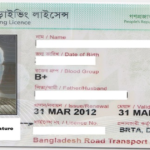With its commitment to going green, EVs are currently the leading choice in the English capital for commuting, and there’s no shortage of opportunities for residents and visitors alike. Overall, with government incentives, more charging infrastructure, and a wider range of EV models, the city has been quickly moving towards greener mobility options. This post covers everything about Electric Vehicles in London: types, benefits, government policies, charging station information, and more.
Types of Electric Vehicles in London
One can classify electric vehicles in London by the way they charge, the way they operate. The major types include:
Battery Electric Vehicles (BEVs)
Finally, Battery Electric Vehicles (BEVs), are fueled exclusively by electric energy, sourced from high-capacity rechargeable batteries. They will not emit any pollutants, so they are perfect for driving through the city since they run quiet and smooth. Popular BEVs in London include the following:
Tesla Model 3
Nissan Leaf
BMW i3
Hyundai Kona Electric
Plug-in Hybrid Electric Vehicles (PHEVs)
A Plug-in Hybrid Electric Vehicle (PHEV) contains both an electric motor and an internal combustion engine. They can travel short distances on electric power, switching to fuel for longer trips. In London, some of the most well-known PHEVs are:
Mitsubishi Outlander PHEV
BMW 330e
Volvo XC90 Recharge
Toyota Prius Plug-in
Hybrid Electric Vehicle (HEV)
A HEV (Hybrid Electric Vehicle) pairs both a petrol or diesel engine with an electric motor, without needing to be plugged in. Instead, they use regenerative braking to top up the battery. Popular HEVs in London are:
Toyota Corolla Hybrid
Honda CR-V Hybrid
Ford Mondeo Hybrid
Hydrogen powered vehicles | Fuel Cell Electric Vehicles (FCEVs)
FCEVs use hydrogen fuel cells that produce electricity and emit nothing but water vapor. Less frequently used, they offer a promising zero-emission alternative. Some FCEVs to be aware of in London are:
Toyota Mirai
Hyundai Nexo
Advantages of Electric Vehicles in London
There are many benefits of electric vehicles to individuals and the environment, such as:
Target zero emissions, from ↓air pollution & ↓ greenhouse gases
Lower Operating Costs: Less fuel and maintenance with no unlike conventional vehicles.
Congestion Charge Exemptions: By being exempt from London’s congestion charges, EVs can save money for those who pass through daily.
PHSC: Grants and subsidies to accelerate EV adoption.
Noiseless Operation: The noise pollution is significantly lower, leading to more livable cities.
Electric Vehicle Charging Infrastructure: All You Need to Know in London
EVs can recharge in London, thanks to a vast EV charging network. Charging stations are classified by speed and accessibility:
Rapid Charging Stations
Fast chargers allow for high-speed charging, with most EVs able to reach 80% battery in under half an hour to one hour. These are the kind of chargers you commonly see at:
Motorway service stations
Shopping centers
Public car parks
Fast Charging Stations
Fast chargers take around 2-4 hours to completely recharge an EV and are best suited for longer breaks. They’re usually placed at:
Supermarkets
Hotels
Workplace parking areas
Slow Charging Stations
They are slow chargers used largely for overnight charging, with charges taking anywhere between 6-12 hours to complete. They are mostly located at:
Residential areas
Hotels
Offices
Which it leads to a need for major CHarging in London
Many public and private networks run EV charging stations around London, such as:
TfL Source London: ‣ Hundreds of charge points via inexpensive membership schemes
BP Pulse: Fast and charging solutions for rapid charging in various locations.
Pod Point: common, well located in retail parks and in car parks
Shell Recharge : Fast-charging at Shell petrol stations
Initiatives and support by the government
The UK government as well as Transport for London (TfL) have developed multiple policies to incentivise the adoption of EVs. Key initiatives include:
Plug-in Car Grant (PiCG): Money available to help get you into qualifying electric vehicles.
Homecharge Scheme — Grants for home charging point installation
ULEZ (Ultra Low Emission Zone)—Fines polluting vehicles

Electric Vehicles in London
Locating Charging Stations in London
EV drivers can find chargers on a number of apps and platforms, such as:
Zap-Map
PlugShare
ChargePoint app
EV Charging Feature in Google Maps
Conclusion
London’s transport system is also being shaped by electric vehicles, as a sustainable alternative to traditional fuel powered vehicles. To this end, the growing range of EVs, nationwide charging infrastructure, and state assistance are all enabling a broader shift towards sustainable mobility.



Pingback: Electric Vehicles in Hungary - Tech Master Online
What touching a phrase 🙂
https://black.volyn.net/forum/viewtopic.php?t=86127
http://steeldirectory.homedirectory.biz/details.php?id=315173
https://1xbetvnlogin.com/